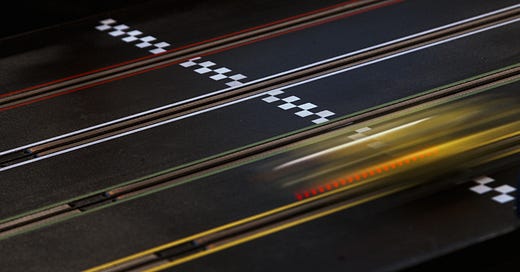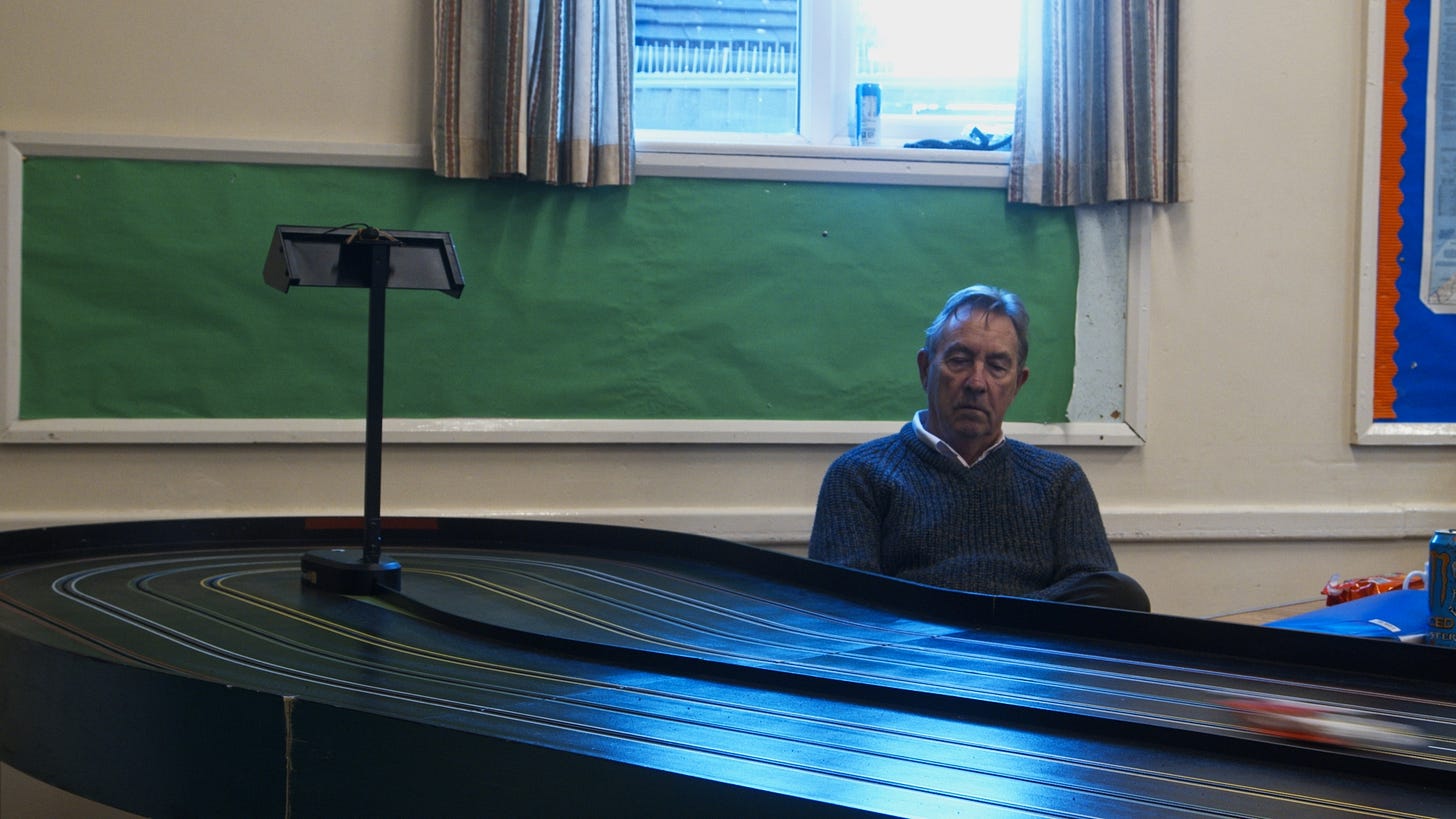I almost miss it the first time I pass it- the small but cozy Moonstruck cafe is one of the many on a busy street in Lambeth. Inside, a hubbub of activity surrounds, layered conversations mixed with the tinkering of the barista, who shows me the carefully organized assortment of teas. It’s clear to me this is a local juncture for many in the neighbourhood and a well cared for establishment, filling out their tables with a regular community of cafe goers.
Moonstruck isn’t around the corner for me, but I’m excited to see not just what’s inside, but what is underneath. You could almost enter and exit for a cup of coffee without knowing about the contemporary venture in the basement of the shop. Just at the top of the stairs, the walls become staunchly white and exhibition texts materialize for a new space that descends down the steps: Under the Spell. Hardly any signage can be found around the cafe to discuss what might be exhibited below. Perhaps this is due to the vision of curator Jéssica Varrichio, who has modelled the art space, opened in April of 2024, as a reflection of the cafe above. Her intent complements Moonstruck’s own social context and warm atmosphere, hence the name Under the Spell. UTS is further described as such in the exhibition text: “Still considering the physicality of the space, UTS flips roles: it is the cafe’s gallery, not the gallery’s cafe. In a cafe lies the dynamic of a place of encounter fertile for creativity and conversations over a warm cup of coffee.”
Currently, the space is exhibiting the video piece Third Place by Jonathan Middleton, which encapsulates the tone and relationship between gallery and cafe most accurately. The film is a subject study on the concept of third place, focusing on a 24-hour slot-car race club in southwest England that has been used for fifteen years as a center of community by its members. It observes and studies the racers with a series of still shots over 45 minutes during the annual 24-hour competition of the club members, featuring four teams of four and their race from dawn to dusk. Comprising still frames of zooming cars, the video puts into contrast the constant movement of each individual car, and the consistent repetition of the collective, marked by a low buzzing of conversation, soft clicking, and the recurrent laps.
Jonathan Middleton, Third Place, Still shot.
This careful relief between community and individual affirms Middleton’s naming of the film Third Place. The concept of third place was first introduced by Ray Oldenburg in his book The Great Good Place (1989), where he underlined the necessity for third places to be valued and lifted in society. Oldenburg divides spatial framework into three: the home (first place), the workplace (second place), and the community space (the third place). He stressed in particular how third places should be serendipitous, accessible for all, and marked by a constant flow of conversation. Middleton focuses the shots in the film on a single person, as well as the whole party. This reinforces our appreciation of this space: its comfort for its inhabitants, its ability to pull singular indentity into a larger community. I watch the camera focus on a shot of a man stooped in a corner of the track as the cars loop around the bend, seemingly threading the eye of a needle and pulling him towards the group as they speed back.
Jonathan Middleton, Third Place, Still shot.
The artist focuses on imagery around the room, documenting still shots of layered interests, beliefs, and cultural affects that this club has made space for. Above the start sign on the race track, someone has attached a cross and a poppy. The track, powered by its electric current, and gaining luminosity as the day folds into night, seems to be the circuit that powers the whole room. Ray Oldenburg describes the role of games in The Great Good Place: “Third places often incorporate these activities and may even emerge around them. To be more precise, conversation is a game that mixes well with many other games according to the manner in which they are played.” Middleton is equally inspired by the racetrack, using its loop to emphasize the one-note narrative of the film. Although we are watching a competition, we never see it. The film doesn’t notice the victor, only the participants, alluding to the “leveling process” of the third place. This is neutral ground.
Jonathan Middleton, Third Place. Still Shot.
Middleton’s film Third Place acts as a vehicle for the cafe above, realizing the curatorial vision of Varrichio. Each mirrors the other, and in this sense, the show carries itself out with me as I ascend to the coffee shop. While the artist spotlights a community within the UK, Moonstruck cafe and UTS may strike a chord with those from outside the country looking for company or comfort. By design, the third place evokes what is required of it, accommodating all visitors alike. The sparkling dialogue and the layering of identity creates an ideal resting place for complex cultural backgrounds. Oldenburg’s original argument over the need for third place within our neighbourhoods, in higher variety and quantity, is heightened when considering a city such as London, home to too many different diasporic influences to count. He speaks of the unique equalizing process that occurs, welcoming in different characters: “Similarly, the third place gang need only know that the newcomer is a decent sort, capable of giving and taking in conversation according to the modes of civility and mutual respect that hold sway among them, and the group needs some assurance that the new face is going to become a familiar one.”
In this I find a particular sense of comfort, as I watch the cars loop around the track, thinking of the cafe that waits upstairs. The special harmony between Moonstruck, UTS, and Middleton’s film Third Place is a consistent pull, acting not as a destination, but a junction, a space for chance encounter and impromptu society.
Images courtesy of artist Jon Middleton and Under The Spell.







